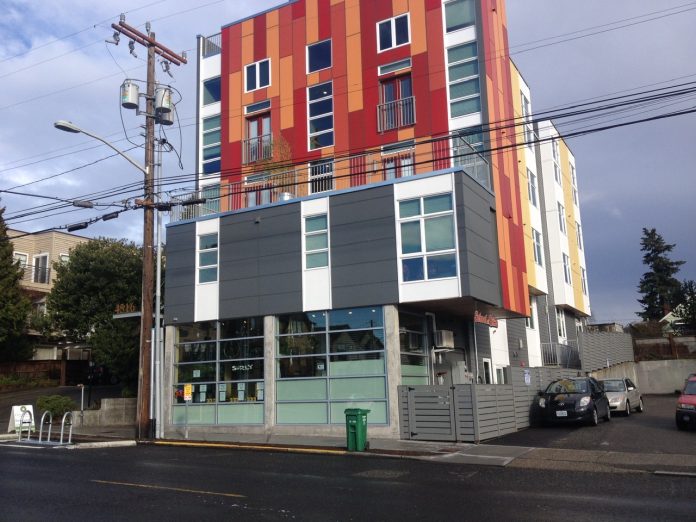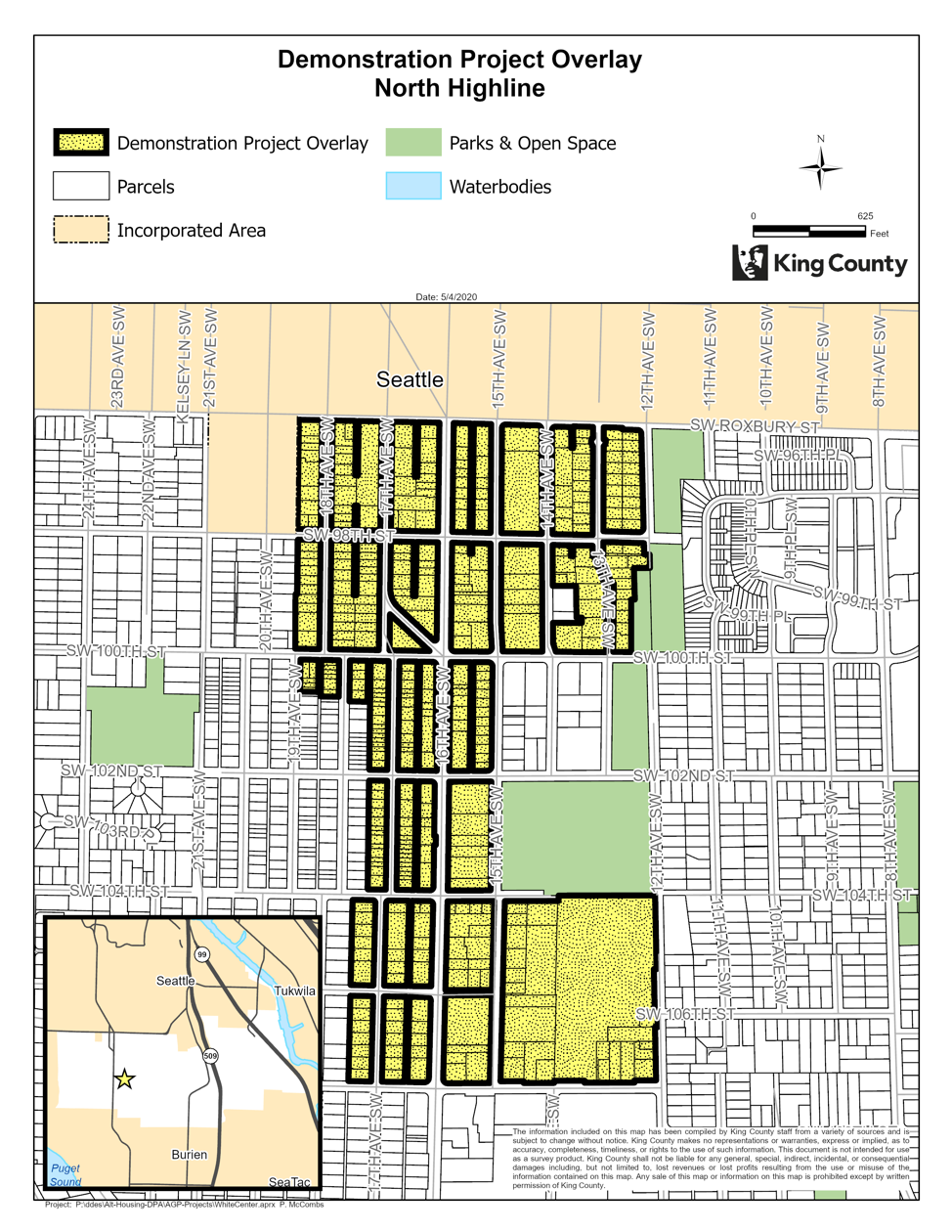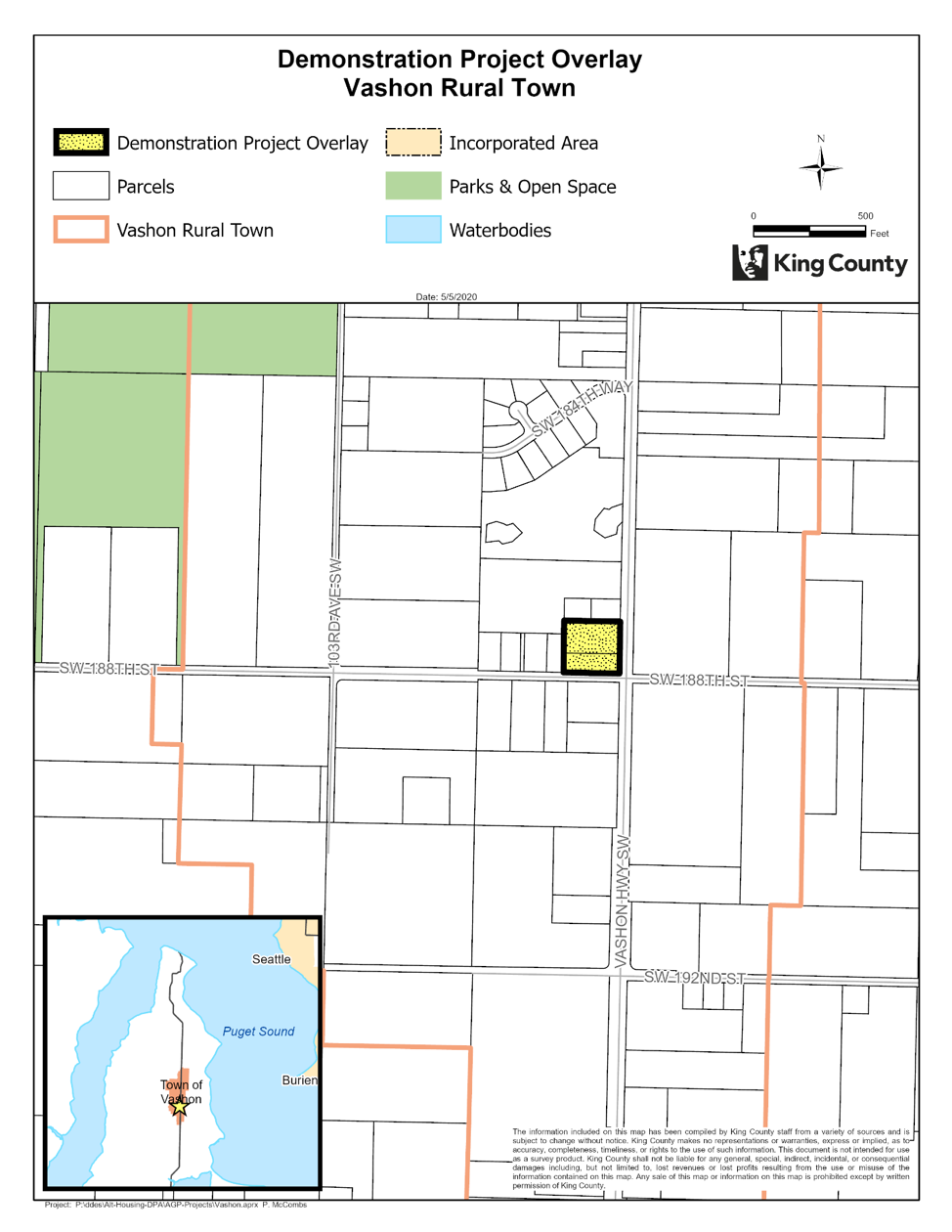The Metropolitan King County Council is considering a demonstration program that would encourage microhousing developments in White Center and Vashon Island. Two demonstration projects could be built over the life of the demonstration program, one in each community. The effort follows a 2016 directive that the King County Department of Permitting and Environmental Review (now the Department of Local Services) conduct a code study for alternative affordable housing models, including microhousing development.
Councilmember Joe McDermott who represents the areas slated for demonstration projects has been a champion of the legislation and is the primary sponsor. “We certainly know we have a need for affordable housing throughout our region and if there are things in our code that inhibit or thwart the development of it, this is a chance to find out if government has run amok and maybe bring ourselves back in line,” he said last Tuesday.
One of the primary goals of the legislation is creating affordable, equitable market-rate housing in the two trial communities, which Councilmember McDermott emphasized in his remarks. “Knowing some of the concerns that we did hear voiced today, I’ve worked with the Department of Local Services to build an important element into these projects. These projects should be built in ways to meet the housing needs of the areas’ current residents,” he said. “Development often occurs without consideration of how it can support people who already live in a community and can result in people who live there, work there, and have really built that community over time to be forced out in gentrification. It is important to me that these projects be built in a ways to work to prevent displacement of current residents from the very beginning.”
If adopted, the ordinance would allow microhousing as a new use within a large swath of White Center and a small block in the Town of Vashon over the next four years. Existing zoning in White Center tends to be commercial (mixed use), medium density multifamily, and some single-family zoning. The highest intensity zoning (Commercial Business) allows for up to 96 dwelling units per acre and 65 feet in building height, but the highest density provisions are generally paired with special conditions, such as transfer of development rights, affordable housing, and mixed-used development requirements. By contrast, existing zoning in Vashon is single-family (Residential-8) allowing up to 16 dwelling units per acre and 35 feet in building height.
The proposed ordinance refers to microhousing as a “congregate residence,” a type of building containing sleeping units or dwelling units that share common sanitation or kitchen facilities. Applicants must demonstrate that waiver of code requirements to facilitate microhousing is merited based upon seven pieces of criteria. The criteria includes the following considerations:
- Will a project increase the range of affordable housing options and meet the unique housing needs in the community?
- Will a project provide housing options directly targeted at low- and moderate-income households?
- Will a project provide for shared facilities, leading to lower rent housing options?
- Will a project endeavor to prevent displacement of local residents?
- Will a project that uses public funding meet or exceed state sustainability standards?
- Will a project that does not use public funding meet or exceed the 4-Star Built Green standards?
- Will a project be aesthetically well-designed?
Within the proposed White Center zoning overlay, the legislation would establish microhousing as a permitted use and waive the underlying maximum residential density and height regulations of the zones. There are several conditions to this, as currently proposed, which would limit a demonstration project to sixty or fewer sleeping units and dwelling units, require that each sleeping unit and dwelling unit be 200 square feet or less, and establish a 60-foot height limit.
The proposed regulations for the Vashon zoning overlay are a little different, though they would still make microhousing a permitted use and waive the underlying maximum residential density zone. Conditions to an eligible demonstration project in the Vashon zoning overlay include a limitation that a development includes no more than five buildings and no more than eight sleeping units and dwelling units per building (i.e., a maximum of 40 sleeping units and dwelling units for a demonstration project), and a requirement that each sleeping unit and dwelling unit be 350 square feet or less, except accessibility units which may be 385 square feet.
Generally, microhousing projects would need to meet specific prescriptive standards, including the following:
- Each congregate residence building would need to provide at least one communal kitchen area. When a building has more than two floors, a communal kitchen would be required on each floor where there are sleeping units.
- Whenever a sleeping unit lacks a bathroom, the unit would required be required to have access to common bathroom on the same floor.
- Communal areas would need to account for at least 12% of the total floor area of sleeping units and dwelling units and be accessible to all residents. Spaces for lounges, recreation rooms, laundry rooms, lobbies, kitchens, and dining rooms would be considered communal areas, but not hallways, corridors, maintenance, and staffing areas.
Contingent on an application being approvable, an applicant would need to make an agreement with the King County Department of Local Services using the following measures:
- Establishing a covenant making rents permanently affordable in the development, which could involve general rent and income restrictions or setting smaller units aside as affordable;
- Taking action to prevent local displacement by development, which could involve affirmative marketing practices or establishing wait lists;
- Providing residents with reliable transportation options to local services, which could involve community vans, bike storage facilities, carsharing programs, or paratransit agreements;
- Incorporating strategies that reflect housing needs of the local community into the development;
- Collaborating with the local community in designing the project;
- Identifying what information the applicant needs to collect, when, and how it will be provided to King County to assist in evaluating the demonstration project; and
- In Vashon, providing of case management services or social connection programs.
Waivers and modifications could be allowed for a wide range of development standards to facilitate microhousing. This could include drainage requirements, building code standard, road standards, and school impact fees as well as land use standards (e.g., use, density, design, parking and access, and landscaping regulations). Ultimately, the proposed ordinance is flexible, allowing microhousing projects to be designed on a spectrum of density in larger and smaller structures that may deviate from more restrictive residential development regulations in White Center and Vashon while vying for deep affordability and community harmony.
So far, the legislation seems to have support among the members of the county council. Final action on the legislation is still several weeks away though, as it will be taken up with the full set of amendments to the King County land use code and Comprehensive Plan in July.
Stephen is a professional urban planner in Puget Sound with a passion for sustainable, livable, and diverse cities. He is especially interested in how policies, regulations, and programs can promote positive outcomes for communities. With stints in great cities like Bellingham and Cork, Stephen currently lives in Seattle. He primarily covers land use and transportation issues and has been with The Urbanist since 2014.





